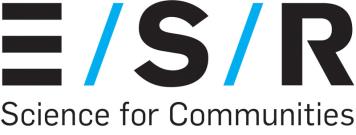 STRATEGIC SCIENCE INVESTMENT FUNDING (SSIF)-
FINAL PROJECT REPORT FOR FY2019/20
STRATEGIC SCIENCE INVESTMENT FUNDING (SSIF)-
FINAL PROJECT REPORT FOR FY2019/20
Please complete and email, in
Word Doc form, to
[Withheld under section 9(2)(a) of the
OIA]@esr.cri.nz by Friday 12th July 2020
ESR is fully accountable for Strategic Science Investment Funding (SSIF).
Information in this report will be used to demonstrate the value of ESR SSIF and to quantify the benefit
from the investment. It will also inform future investment of SSIF.
Your Final Report is also used to populate the Board Science Report for FY2019/20. Please remember
if you don’t inform the Research Office we can’t inform MBIE or the Board, and your work will not
have the impact it deserves.
.
Project Title: Centre for Integrated Biowaste Research (including pathogen removal in
wastewater)
Pro
Du j
r e
a ct
tioLea
n: I d
n ers
FY :
2019/20, this report is for Year__3___ of __3__ funded years
Completion of Milestones
Please provide:
#Of Milestones in the project [ 26 ]
#Of Milestones COMPLETED [16]
#Of Milestones ON TRACK [ 4 ] PhD students and establishing collaborations
#Of Milestones BEHIND
[ 5] this delayed milestones are related with inability to access
labs during Covid19 lockdown, or extra time spent on writing proposals instead of writing the
planned papers.
 List the external research or grant proposals submitted (include $ value) and any research funding
List the external research or grant proposals submitted (include $ value) and any research funding
obtained that have been made possible as a result of SSIF investment in the project; include
proposals awaiting funding decisions:
1.
[Withheld under section 9(2)(b)(ii) of the OIA] Under negotiation.
2.
[Withheld under section 9(2)(b)(ii) of the OIA] Pending.
3.
[Withheld under section 9(2)(b)(ii) of the OIA] Pending.
4.
[Withheld under section 9(2)(b)(ii) of the OIA] Pending.
5.
[Withheld under section 9(2)(b)(ii) of the OIA] Unsuccessful.
6.
[Withheld under section 9(2)(b)(ii) of the OIA] Unsuccessful.
7.
[Withheld under section 9(2)(b)(ii) of the OIA] Unsuccessful.
8.
[Withheld under section 9(2)(b)(ii) of the OIA] Unsuccessful.
9.
[Withheld under section 9(2)(b)(ii) of the OIA]Unsuccessful.
10.
[Withheld under section 9(2)(b)(ii) of the OIA]
List the 1) peer reviewed publications, 2) conference presentations (oral) 3) conference
presentations (poster), 3) external presentations other than conference developed from this SSIF
project:
1. Peer reviewed publications
1.
Gutiérrez-Ginés MJ, Mishra M, McIntyre C, Chau H, Esperschuetz J, McLenaghen R, Bourke
M,
Robinson BH (2020). Risks and benefits of pasture irrigation using treated municipal
effluent: a lysimeter case study, Canterbury, New Zealand. Environmental Science and
Pollution Research 27, 11830-11841.
2.
Seyedalikhani S, Esperschuetz K, Dickinson NM, Hofmann R, Breitmeyer J, Horswell J,
Paramashivam D,
Robinson BH (2020). Biowastes promote essential oil production on
degraded soils. Industrial Crops and Products 145, 112108.
3.
Saleeb N, Robinson BH, Cavanagh J, Ross J, Munir K, Gooneratne R (2020). Antioxidant
Enzyme Activity and Lipid Peroxidation in Aporrectodea caliginosa Earthworms Exposed to
Silver Nanoparticles and Silver Nitrate in Spiked Soil. Environmental Toxicology and
Chemistry 39(6), 1257-1266.
4.
Saleeb N, Gooneratne R,
Cavanagh J, Bunt C, Hossain AKM, Gaw S,
Robinson BH (2019). The
Mobility of Silver Nanoparticles and Silver Ions in the Soil-Plant System. Journal of
Environmental Quality doi:10.2134/jeq2019.03.0098
5.
Jensen H, Orth B, Reiser R, Bürge D, Lehto NJ, Almond P, Gaw S, Thomson B, Lilburne L,
Robinson BH (2019). Environmental Parameters Affecting the Concentration of Iodine in
New Zealand Pasture. Journal of Environmental Quality 48 (5), 1517-1523

6.
Simcock R, Cavanagh J, Robinson BH and Gutierrez-Gines MJ (2019). Using Biowastes to
Establish Native Plants and Ecosystems in New Zealand Frontiers in Sustainable Food
Systems October issue, volume 3, article 85.
7. Yao, R. T.,
Langer, E. R., Leckie, A., & Tremblay, L. A. (2019). Household preferences when
purchasing handwashing liquid soap: A choice experiment application. Journal of Cleaner
Production, 235, 1515-1524.
8.
Tremblay LA, Booth L,
Cavanagh JE, Champeau O,
Northcott GL, Cedergreen N. 2019. The
effects of the mixtures of three micro-contaminants commonly found in biosolids on
earthworm reproduction. The Australasian Bulletin of Ecotoxicology and Environmental
Chemistry. 5: 1:12.
9.
Charry MP, Keesing V, Gaw S, Costello MJ, Champeau O,
Tremblay LA. 2020. Assessing the
efficacy of a sediment remediation programme using benthic and pelagic copepod
bioassays. Environmental Toxicology and Chemistry. 39: 492–499. DOI: 10.1002/etc.4632
10.
Clemens, H, Pang L, Morgan LK,
Weaver L. Attenuation of rotavirus, MS2 bacteriophage and
biomolecule-modified silica nanoparticles in undisturbed silt loam over gavels dosed with
onsite wastewater. Water Research. doi: 10.1016/j.watres.2019.115272.
11.
L.A. Tremblay, X. Pochon
, O. Champeau,
V. Baker and
G.L. Northcott. 2020. The current
status of plastics- a New Zealand perspective
. Chapter 21. In: “Particulate Plastics: Sources
and Ecotoxicity in Terrestrial and Aquatic Environments.” Editors: N. S. Bolan, M. B. Kirkham,
C. Halsband, D. Nugegoda and Y. S. Ok. CRC Press. ISBN 9780367511401
12.
Liu, Y., Cheng, D.,
Xue, J., Weaver, L., Wakelin, S.A., Feng, Y. and Li, Z., 2020. Changes in
microbial community structure during pig manure composting and its relationship to the
fates of antibiotics and antibiotic resistance genes. Journal of Hazardous Materials,
p.122082.
13. Humphries, B.,
Weaver, L., Burbery, L., Webber, J., Morgan, L., Gregor, J. (2019). Examining
the use of coral sand for the treatment of domestic effluent in Kiribati. J. of App. Micro., In
print online https://doi.org/10.1111/jam.14555.
2. Conference presentations (oral)
1.
Tremblay LA, Charry MP, Keesing V, Costello MJ 2019. Assessing the efficacy of a sediment
remediation programme using benthic and pelagic copepod bioassays. A talk presented at
the SETAC-Australasia, Darwin, Australia, 7-10 July.
2. Andrew Rumsby, Therese Manning, Karen A Stockin,
Louis A Tremblay. 2019. State of
Knowledge of PFAS in New Zealand Biota. A talk presented at the EcoForum Conference &
Exhibition. Auckland, 3-5 September.
3.
Horswell J, Northcott GL, Ataria J, Tremblay LA, Baker V, Alderton I. Developing guideline
thresholds for emerging organic contaminants. Presentation given at AFSS and NZFSS joint
Conference, 1-4 December 2019, Australia.
4.
Xue JM, Kimberley M, Wang M, Gielen G,
Tremblay LA, Champeau, Ross C, Horswell J.
Beneficial use of biosolids in pine forests in New Zealand: What are the environmental and
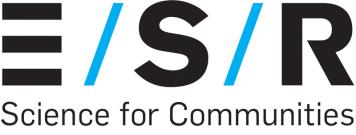
ecological impacts. An invited keynote presentation in the 16th International Phytotechnology
Conference in Changsha, China on 23-27 September 2019.
5.
Xue JM, Kimberley M, Wang M, Gielen G,
Tremblay LA, Champeau, Ross C, Horswell J.
Ecosystem responses to long-term application of biosolids to a pine forest in New Zealand. An
invited presentation in the Joint Workshop between Chinese Academy of Agricultural Sciences
and AgResearch in Beijing, China on 6-7 Nov 2019.
6.
Louis Tremblay: “Research on Emerging Contaminants in New Zealand – an introduction”
and “Assessing the risk of Emerging Contaminants and plastic additives”, two oral
presentations as part of the “Microplastics and other emerging contaminants of concern:
Research programmes and their aims” webinar coordinated by WasteMINZ. 16 June 2020.
3. Conference presentations (poster)
1. Louis Tremblay, Izzie Alderton, Maria Gutierrez-Gines, Alessandra Santana and Jacqui
Horswell. 2019. Emerging organic contaminants and antimicrobial resistance. A poster
presented at the Water New Zealand Conference & Expo, Hamilton 17 – 20 September.
2.
Tremblay LA, Rumsby A, Stockin KA,
Northcott GL 2019. Status of PFAS knowledge in New
Zealand. A poster presented at the SETAC Environmental risk assessment of PFAS workshop.
Durham USA, 12-15 August.
3.
Horswell J, Villanueva S, Gutierrez-Gines MJ, Prosser J, Tinholt R, Lowe H. 2019. Biosolids to
grow seedlings - a potential new market. Poster presented in the
Water New Zealand
Conference and Expo, 18-20 September 2019, Hamilton
4. Prosser J,
Horswell J, Gutierrez-Gines MJ, Lowe H. 2019. A Regional Biosolids Strategy –
Achieving Sustainable Use Through Collective Management. Poster presented in the
Water
New Zealand Conference and Expo, 18-20 September 2019, Hamilton
5. Cass
S,
Lowe
H,
Gutierrez-Gines
MJ,
Robinson
B,
Meister
A, Horswell J.
2019. Mānuka and Kānuka Join New Zealand’s Freshwater Quality improvement Battle.
Poster presented in the
Water New Zealand Conference and Expo, 18-20 September 2019,
Hamilton
6.
Louis Tremblay, Izzie Alderton, Maria Gutierrez-Gines and Jacqui Horswell. Emerging Organic
Contaminants and Antimicrobial Resistance. Poster presented at AFSS and NZFSS joint
Conference, 1-4 December 2019, Australia.
4. External presentations (other)
1. Jacqui Horswell,
Virginia Baker, James Ataria, Alan Leckie, Joanna Goven, E.R. (Lisa) Langer,
Peter Hill and Hamish Lowe. (2019) A practical guide to community engagement for the
beneficial re-use of biosolids.
Water New Zealand Issue 210, July/August 2019, p30-
32. https://www.waternz.org.nz/Attachment?Action=Download&Attachment_id=3808
2.
Tremblay LA. 2019. Managing emerging contaminants in New Zealand. A talk presented at
Civil and Natural Resources Engineering, University of Canterbury, 18 October.
3.
Xue JM. Microplastics in soil-plant system: source, fate and ecological impact. An invited
presentation at Nanjing Forestry University on 14 Nov 2019.
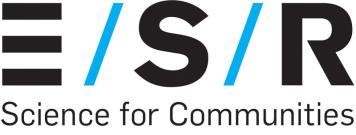
4.
Gutierrez-Gines MJ. 2019. Manuka plantings along the waterways to reduce
E. coli and faecal
source tracking. Invited presentation for the Catchment Group Forum and
E. coli Seminar.
NZ Landcare Trust. 3 December 2019, Waipukarau.
5. Horswell J, Simpson I, Prosser J,
Robinson B, Maria Gutierrez-Gines M, Tremblay LA. 2020.
Something in the water: investigating the leaching of metals from household taps. A Massey
University Report. 18 p.
6. Stewart M and
Tremblay L. 2020. Review of the risks from emerging organic contaminants in
waterbodies to human and environmental health in Southland. Report ESO1901–Final 24-04-
20, Streamlined Environmental, Hamilton, 63 pp
7.
Xue, J. and Coker, G. 2020. Assessing the impact of land application of biosolids on planted
pine forest and soil properties at Moturoa / Rabbit Island. A technical report for
NRSBU/TDC/NCC.
8.
Weaver, L. 2020. Getting the most out of waste: Using wastewater as an indicator of health
in communities. Invited presentation at Sewage treatment and management training course
for PHO’s and EHO’s, Wellington, 13th March 2020.
Our goal for SSIF investments for FY2018 was to increase ESR capabilities and impact across our
four key areas (forensics, food, health and water). Please provide details on HOW your SSIF project
contributed to:
1.
Developing our capability in areas of national importance
-
The social and cultural team furthers our collaborative exploration of new models of
indigenous knowledge building/science education/community engagement for sustainable
change, allowing the knowledge of the team to be more widely known. Apart from Te Pa,
stronger collaboration has been established with ParaKore.
- Through our collaboration with Chinese colleagues, we are increasing our capabilities in
detecting and assessing the impact of emerging organic contaminants, including microplastics
and AMR in the soil environment. This will likely develop into an externally funded research line.
-
Starting a new research line about circular economy applied to primary industry waste, and
especially relevant for waste from municipal water sector.
-
Maintenance of five permanent field trials, as a scientific resource for the long-term
investigation of biowaste and NZ native vegetation, including the collaborative infrastructure
with councils, community, farmers, iwi, and other research organizations.
-
Supporting future scientists by PhD and Masters studies (13 students currently) in
collaboration between CIBR teams and with external entities.
2.
ESR’s impact for New Zealand
- Give effect to Vision Matauranga in work related with holistic views of environment and
sustainable behaviour, management of waste, collaborative governance of environmental
issues.
- Provide science based support for reducing the disposal of biowaste, and finding optimal
reuse options for the best cultural, social, economic and environmental outcomes, as well as
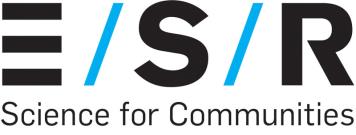
the use of native plants to manage and mitigate the impact of human activities into the
environment. In this respect, we are collaborating with 18 regional and district councils, and
six iwi groups.
- Provide science and knowledge about risks of emerging contaminants, and antimicrobial
resistance in the NZ fragile environment and public health.
- Recovering NZ native ecosystems in degraded environments, such as mine areas, biowaste
disposal fields, and intensive agricultural areas.
- Increasing the visibility of NZ science and research into the international landscape.
 Executive summary – Three to four sentences giving an overview of your project and the results
Executive summary – Three to four sentences giving an overview of your project and the results
obtained. This will be used for the Board Report so keep in mind that not everyone is an expert in
your field.
The Centre of Integrated Biowaste Research (CIBR) is a virtual research centre with transdisciplinary
expertise, led by ESR, and composed of Maanaki-Whenua/Landcare Research, Scion, Cawthron
Institute, University of Canterbury, Northcott Research Consultants, Kukupa Research, Massey
University, and Lowe Environmental Impact. The goal of CIBR is to investigate unique and holistic
solutions for the sustainable management of biowastes (organic waste and wastewater), by
delivering value-added science that improves human well-being and protects the environment.
Despite the disruption caused by the global pandemic of COVID-19, in the past year (July 2019 - June
2020), CIBR has demonstrated its success by:
- delivering internationally recognized research, by publishing 12 papers in international peer
reviewed scientific journals, giving 12 presentations in national and international conferences, and
being invited to give 3 presentations, prepare 3 reports, and one journal article, and organize
outreach activities, published two newsletters, and refresh the content in the webpage.
- participating in nine externally funded proposals of a total value of $47M over 3 to 5 years.
- keeping working collaborations with 18 regional and district councils, and six iwi groups.
- having 1 successful master student, and 8 PhD, 3 master/honours, and 2 postdoc ongoing students.
- investigated Māori worldviews of kaitiakitanga/guardianship, and values of whānau (family),
whakapapa (genealogy), and tikanga (tradition) in designing opportunities to reuse and minimise
biowastes.
- maintaining and gathering data from five permanent field trials which are an important scientific
resource for the team for investigating long-term effects of biowaste and restoration of NZ native
species, and which have been of vital importance for developing four external fund applications.
- this year we have secured external funding to support establishment of a field site for on-site
wastewater management assessment. This site will enable monitoring of disposal field from OSWM
and the transport of contaminants into groundwater – bridging the gap between lab-scale studies
and modelling assumptions.
- extending our capabilities by increasing longstanding collaborations with research institutes in
China, Australia, UK, and Spain.
Project report –Include brief background, what you did, what you found, conclusions (max 2 pages).
This is the opportunity to tell a success story that ESR can use in Impact Case Studies, Briefing and other
communications
The CIBR group has continued to develop the necessary work for investigating unique and holistic
solutions for the sustainable management of biowastes (organic waste), which improves human
well-being and protects the environment. In particular, CIBR’s work has been focused on three main
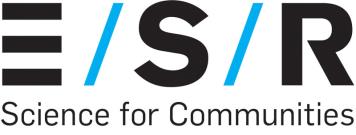
streams: i) deliver cutting-edge science regarding the beneficial reuse of biowaste, ii) to inform
environmental and public health decision making in New Zealand, iii) increase our capabilities and
grow our science by increasing our international and national collaborations, attracting new
research, and bringing new students.
Delivering valuable science
The CIBR team has continued its successful research with further developments in these areas ,
particularly developing methods for analysing emerging contaminants and their ecotoxicity,
investigating beneficial reuse of biosolids, greywater, the long-term Rabbit Island Field trial, mānuka
and native plants for reducing the impacts of biowaste land application, and a robust social and
cultural program. These projects span multiple research streams within CIBR (Soil Science,
Microbiology, Ecotoxicology, Social and Cultural). Several research projects are emerging that have
strong future potential with significant collaborative opportunities and high likelihood of bringing in
more revenue for the group.
We have successfully collected and transcribed information regarding Māori worldviews of
sustainability and kaitiakitanga, and how to translate those values into day to day sustainability and
education practices. The school Te Pā in Ōtautahi (Christchurch) has become a living example of
holistic sustainable behaviour. This information is currently been written up as a scientific paper,
which will be submitted in October 2020. We are developing ecotoxicity tests to evaluate the
potential environmental risks of emerging organic contaminants in NZ native species, using cutting
edge transcriptomic techniques. Due to interruptions because of the Covid19 lockdown, these
experiments and the results will be delivered by the end of the year. Rabbit Island’s experiment is
still producing exciting results about the long term benefits and potential risks of biowaste
application into forestry, regarding organic contaminants, trace elements, and carbon sequestration
in soil and biomass. NZ native vegetation is gaining great attention due to their potential
antimicrobial properties, economic revenue, and for restoration of NZ’s fragile biodiversity using
biowaste. We have now five field trials established around the country evaluating the role of NZ
vegetation for treating biowaste and farm run-off: Waikare, Wairarapa, Levin, Duvauchelle, and
Stockton Mine, which are providing valuable long-term data. In addition, we are currently analysing
data from two greenhouse experiments, two field experiments, and one lysimeter experiment,
which will produce 3 scientific publications by the end of the year. We have demonstrated that there
are bacteria that are able to grow on EOC from wastewater environments. We will now establish the
pathways of degradation. We are continuing our investigation on the potential for microbes
(bacteria and later fungi) to remove antibiotics in wastewater. We have communicated the results in
12 peer-reviewed papers - and three more are planned for journal submission - 15 conference
proceedings in national and international conferences and workshops, and have been invited to give
lectures and science talks. We shared our knowledge with general public and stakeholders via two
CIBR newsletters and the CIBR webpage. We have appeared in the media in numerous occasions.
We are working closely with 18 regional and district councils, and six iwi groups.
Increase our capabilities and grow our science
The CIBR team realises the importance of growing our research and capabilities to be able to deal
with imminent challenges in NZ. We have been growing our capabilities in Vision Matauranga by
exploring and understanding new models of indigenous knowledge for sustainable change, allowing
the knowledge of the team to be more widely known. This understanding and collaborations with
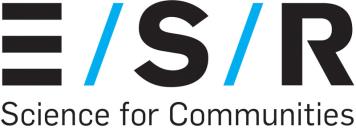
our maori partners resulted in developing a Marsden project, which finally was unsuccessful. We are
developing new transcriptomic methods for assessing ecological impacts of contaminants in NZ
native species, methods for sampling and analysing groundwater samples for residual contaminants,
and genomic methods for detecting Antimicrobial resistance (AMR) in wastewater.
Our multidisciplinary capability and valuable track record allowed us to develop or been part of nine
externally funded proposals of a total value of $47M over 3 to 5 years. This implies five more
applications than last year, which highlights the collaboration between CIBR team members as well
as with external collaborators.
We are extending our capabilities by increasing longstanding collaborations with research institutes
in China, Australia, UK, Spain, and Chile and new Māori organisations, such as Para Kore.
We are strongly investing in future scientists by supporting PhD, master and intern students, who
have been working and enhancing collaboration between CIBR teams and external institutions:
Successful students this year:
1.
[Withheld under section 9(2)(a) of the OIA]
Current students
1.
[Withheld under section 9(2)(a) of the OIA] 2.
[Withheld under section 9(2)(a) of the OIA] 3.
[Withheld under section 9(2)(a) of the OIA] 4.
[Withheld under section 9(2)(a) of the OIA] 5.
[Withheld under section 9(2)(a) of the OIA] 6.
[Withheld under section 9(2)(a) of the OIA] 7.
[Withheld under section 9(2)(a) of the OIA] 8.
[Withheld under section 9(2)(a) of the OIA] 9.
[Withheld under section 9(2)(a) of the OIA] 10.
[Withheld under section 9(2)(a) of the OIA] 11.
[Withheld under section 9(2)(a) of the OIA] 12.
[Withheld under section 9(2)(a) of the OIA] 13.
[Withheld under section 9(2)(a) of the OIA]








